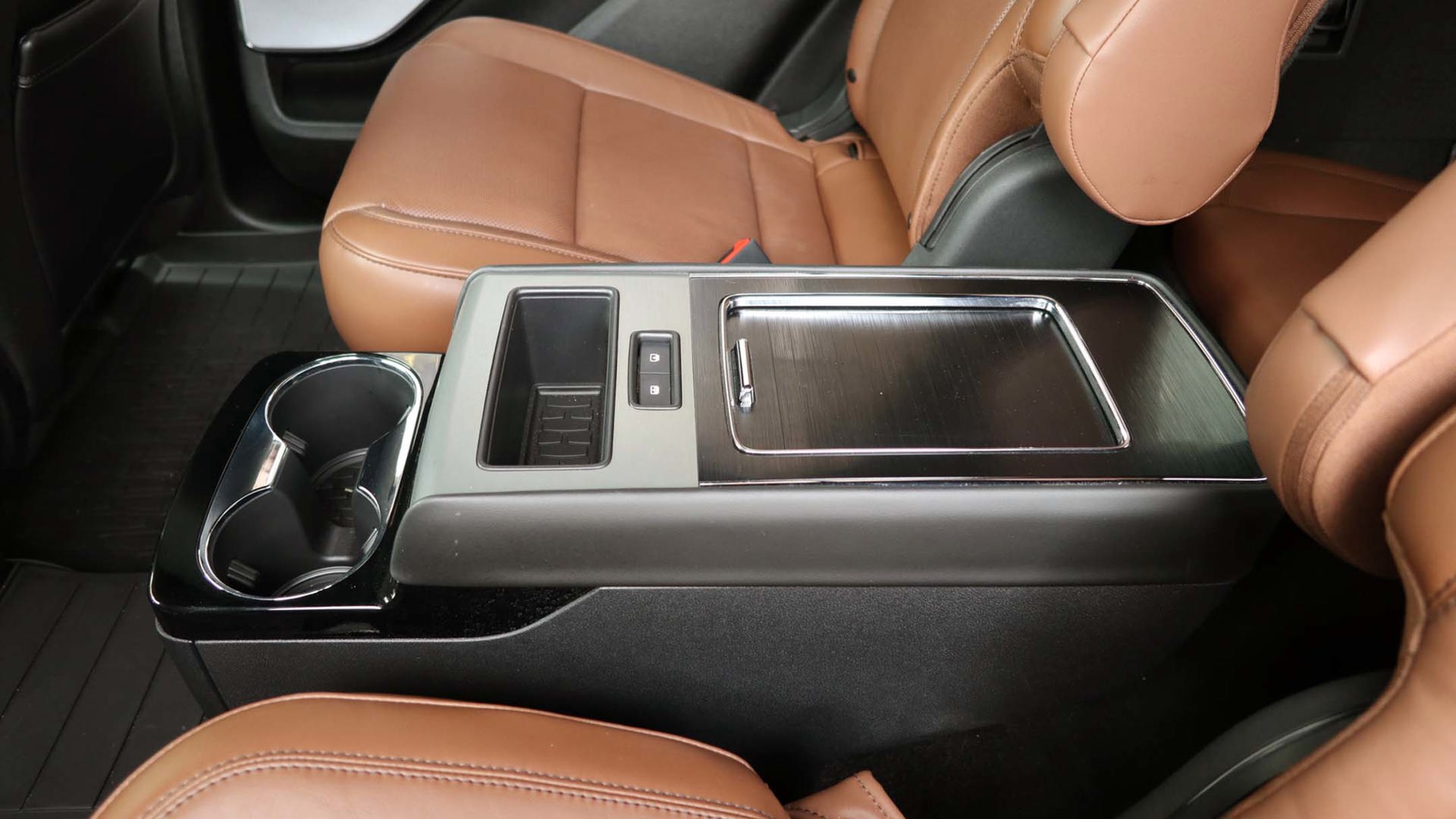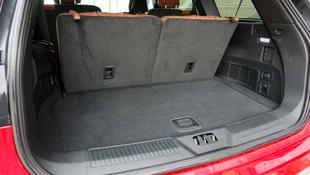 AutoTrader SCORE
AutoTrader SCORE
-
STYLING9/10
-
Safety9/10
-
PRACTICALITY8/10
-
USER-FRIENDLINESS6/10
-
FEATURES8/10
-
POWER9/10
-
COMFORT6/10
-
DRIVING FEEL8/10
-
FUEL ECONOMY8/10
-
VALUE6/10
With sport-utilities as popular as they are, automakers are out to solidly fill their people-mover segments. At Lincoln, one of the most recent additions is the all-new 2020 Aviator. This three-row model slots between the Navigator, the company’s largest SUV, and the smaller Nautilus, the new name for the MKX (I, for one, welcome Lincoln’s recent decision to drop its alphabet-soup labels in favour of real monikers).
My tester was the conventional model, the Reserve, starting at $69,000; there’s also a plug-in hybrid, called the Grand Touring, which is priced at $81,000. Both models feature all-wheel drive. My vehicle had a number of options that brought its total to $85,235 before freight and taxes.
Styling: 9/10
The Aviator is based on the Ford Explorer’s platform, but that’s about where the similarities end. In one of its wisest moves, the company no longer creates Lincoln models by adding some fancier trim to a Ford. I really like the Aviator’s smooth styling; the lines flow gracefully from front to back, the grille is sized just right for it, with a clean and uncluttered rear to boot.
The luxury feel includes soft-close doors: Bring them in almost all the way and they pull themselves in those last few millimetres, with no need to slam them (providing, of course, you’ve bought the $2,000 Convenience Package that includes this feature). The proximity key includes welcome lighting that gradually illuminates the front end, including the lighted emblem in the grille. And the hands-free liftgate opens with a relatively low lift-over for getting cargo easily into the compartment.
Safety: 9/10
You have to pay extra for some of the features, but the Aviator includes an impressive suite of safety technologies. It also rates the highest “Good” on most items with the Insurance Institute for Highway Safety (IIHS), with “Acceptable” for small driver’s side overlap.
The standard safety features include blind-spot monitoring with cross-traffic alert, emergency front braking, lane-keeping assist, automatic high-beam headlamps, and for the rear-view camera (which is standard equipment on all new vehicles), there’s a washer to keep it clean. My tester was equipped with Lincoln Co-Pilot 360 Plus, which includes adaptive cruise control with stop-and-go, lane centring, reverse emergency braking, evasive steering assist (which boosts the steering as needed if the vehicle detects a possible collision), and a pretty cool version of active park assist – but more on that later.
Practicality: 8/10
The Aviator is roomy for your stuff. Even with the third row upright, you get 518 L of cargo volume, and that’s an important consideration; if you’re carrying three rows of people, you need some room for what they’re bringing along as well. There’s a storage cubby under the cargo floor, too. If that’s not enough, the Aviator can tow 5,600 lb as it comes out of the box, while you can order a towing package that increases that to 6,700 lb.
My tester was equipped with a full-size rear centre console, at an extra $735, which includes storage and cupholders for those in the second-row chairs. For those closer to the windshield, the console up front opens to reveal some extra storage space as well.
User Friendliness: 6/10
The Aviator handles many of its functions with buttons, such as its simple-to-use climate control, which is always a plus for me. But where I have an issue with the vehicle is that while most of the tasks it performs are relatively simple to set in motion, nothing happens quickly.
The centre touchscreen is slow to wake up when you start the vehicle, and it’s equally slow to respond when you tap the icons. A few functions require a two-step process. For example, when you want to change the climate mode, you hit a hard button, but that only brings up a screen where you must then tap an icon. If you tap the steering wheel button to change the information screen in the instrument cluster, you have to wait while the display starts small and then slowly spreads out to its full size. And if you hit the windshield washer button, it takes almost two seconds before the wipers start to swipe. If that doesn’t sound like very long, count it off while imagining your windshield covered in dirt and you’re driving blind until it’s clear.
Features: 8/10
The Aviator comes in a single trim line known as the Reserve, and only with all-wheel drive. The standard features list is a long one; highlights include 20-inch wheels, auto-dimming mirrors, power-adjustable heated steering wheel, blind-spot monitoring, lane-keeping assist, 10.1-inch centre touchscreen, rain-sensing heated wipers, Wi-Fi hotspot, satellite radio, leather upholstery, heated and ventilated front and second-row seats, and power-folding third-row seats.
But you can beef it up from there, and mine was beefed indeed. Among other items, I had a $2,000 Convenience Package that added soft-closing doors, a head-up display, wireless charging (although I’m surprised that isn’t included in the base $69,000 price), and Phone As A Key, an app that, as it sounds, lets you use your device as a key fob including remote starting and climate/stereo/seat preferences. I also had a $9,000 package that included a panoramic roof, 22-inch wheels, and the Co-Pilot 360 Plus suite of technologies.
The 360 Plus includes a self-parking feature that goes beyond most others I’ve used. Usually these features locate a spot and steer into it, while you switch gears and brake as needed. As long as you keep your finger on the button, the Aviator does it all, including selecting Reverse and Drive by itself. But that said, on a rainy night when I wanted to show it off to friends, the water on the rear camera ruined its view and prevented it from working.
Power: 9/10
The Aviator comes with a single engine choice, a twin-turbocharged 3.0L V6 that turns out 400 hp and 415 lb-ft of torque, mated to a ten-speed automatic transmission. In Canada, all Aviators are all-wheel drive, but in the United States, buyers can opt for rear-wheel only. Because of that configuration, the all-wheel drive system is rear-biased.
That’s a decent amount of power, but this being a Lincoln, it’s tempered for luxury. The Aviator doesn’t feel quick off the line, but you soon realize it when you hit the throttle and glance at the speedometer. The engineers have done a very good job of smoothing everything out and giving the acceleration a linear feel.
Comfort: 6.5/10
My option packages included special front seats, and combined with the rest of the chairs, my impression reminded me of the Goldilocks story: The front row was too much, the third row too little, and the second row was just right.
Those optional seats included a massage function, which I liked, but also came with 30-way adjustment – and while that sounds impressive, it’s possible to have too much of a good thing. Move one adjustment just a little and it throws something else out of whack. It takes a while to fiddle with it, but even if you save it to memory, you might want to adjust something on a long drive, and now it’s not-quite-right again. I’d have been much happier with the 12-way seats that come as standard equipment. And as for the third row, to Lincoln’s credit, the second row moves to give you a lot of room to access it. But once you’re back there, you’re on a hard, flat board with very little legroom. Don’t expect people stuffed in there to be terribly happy with you.
Driving Feel: 8/10
My tester was equipped with a $3,500 Dynamic Handling Package, which added a four-corner air suspension, adaptive steering, and adaptive suspension with “road preview.” A camera scans the road ahead, and when it spots bumps or holes, the suspension stiffens or softens to even out the ride. It does a really good job and the Aviator’s ride is seriously smooth, even in its sportier mode. A dial lets you select the ideal settings for such conditions as snow or dry roads, which – and you can’t tell me someone didn’t realize the double entendre when naming them – include Deep, Slippery, and Excite.
There isn’t a lot of steering feel, but this trucklet responds well to input, and it feels smaller than it is when tackling a curve. You won’t mistake it for a German sports model, but you can have a bit of fun with it nevertheless.
Fuel Economy: 8/10
The Aviator’s official fuel figures are 13.7 L/100 km in the city, 9.7 on the highway, and 11.9 L/100 km in combined driving. That puts it in the midst of much of its competition, above vehicles like Volvo’s XC90 and Jaguar’s F-Pace, or the Hyundai Palisade/Kia Telluride (you may not think you’d hear those names in this type of company, but I’d suggest test-driving them against the Lincoln), but almost tied with Cadillac’s XT6, and better than Audi’s Q7. But some of those models want premium-grade fuel, while the Aviator is rated at 87-octane regular gas.
Value: 6.5/10
Not much is a bargain at this level. With a starting price of $69,000, the Aviator is less than the Q7 or X5, but it’s pricier than the Mercedes-Benz GLE-Class, Volvo XC90, or Cadillac XT6. (And it’s a lot pricier than the Telluride or Palisade in top-level trim, and seriously, give those a look.)
But those are starting prices, and the Aviator can climb quickly when you start adding everything up. I liked almost everything that my tester carried, but a final tag that topped $85,000 seemed a bit high.
The Verdict
And perhaps that’s part of the problem: Many people still have a perception of the domestic luxury brands where they don’t see them as competitors to European or Japanese high-end brands, and an expensive Lincoln isn’t going to overcome that. But the company has done a good job with this, and for its smooth performance, good looks, and numerous features, it deserves a look when test-driving. With some careful selection of the various options and packages, the Aviator might ultimately be the one that flies.
| Engine Displacement | 3.0L |
|---|---|
| Engine Cylinders | V6 |
| Peak Horsepower | 400 hp @ 5,500 rpm |
| Peak Torque | 415 lb-ft @ 3,000 rpm |
| Fuel Economy | 13.7/9.7/11.9 L/100 km cty/hwy/cmb |
| Cargo Space | 518 / 1,183 / 2,200 L behind 3rd/2nd/1st row |
| Model Tested | 2020 Lincoln Aviator Reserve |
| Base Price | $69,000 |
| A/C Tax | $100 |
| Destination Fee | $2,100 |
| Price as Tested | $87,435 |
|
Optional Equipment
$16,235 – “Red Carpet” metallic paint, $850; Equipment Group 202A including vista roof, Co-Pilot 360 Plus, 22-inch wheels, illumination package, luxury package, Revel audio, towing package and 30-way seats, $9,000; Front- and second-row floor liners, $150; Convenience Package of soft-close doors, head-up display, Phone As A Key and wireless charging, $2,000; Dynamic Handling Package, $3,500; Full rear console, $735
|
|







































